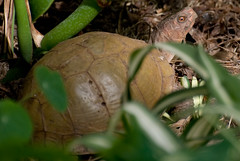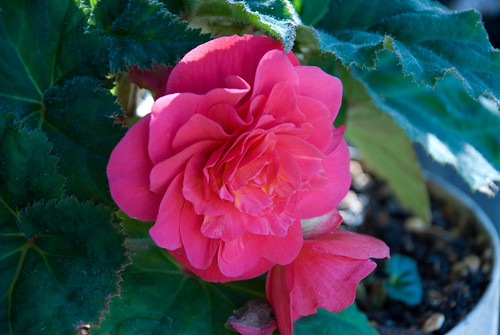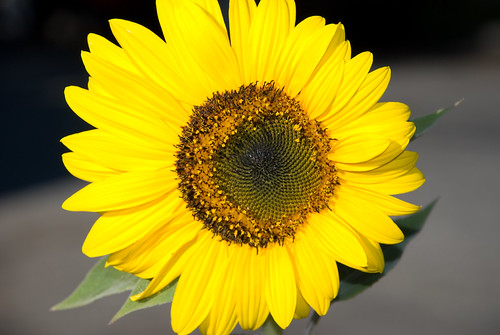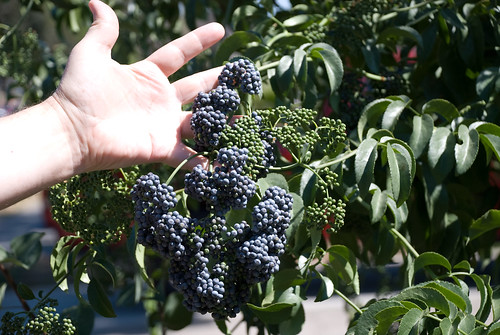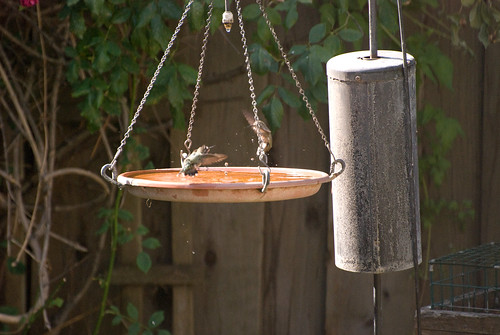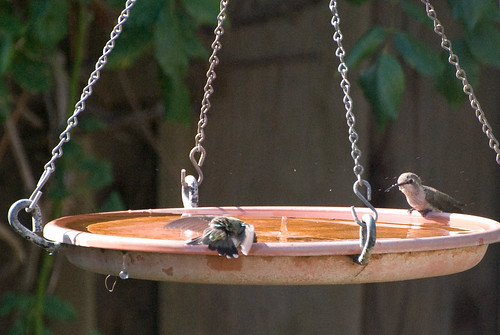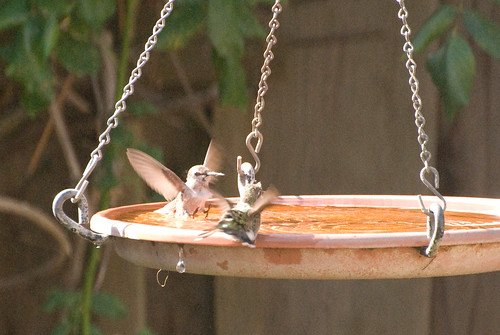In my last
post I talked about many of the different gardening topics I've learned over the years. One of those topics --
vertical gardening -- is the subject of today's veggie gardening discussion.
The whole idea of vertical [vegetable] gardening is that you grow your crops up a trellis rather than letting them sprawl all over the ground. Advantages include using less ground space, keeping the mud off your produce, and not having to bend and stoop so much to check on and harvest your crop.
But the advantages weren't readily obvious back when I was first gardening. For example, let's look at green beans. The farmers that produce green beans for canning, freezing, and selling fresh in the market grow bush beans. Rows and rows and rows of bush beans. Why? Because they put on and ripen a single crop all at once that can be easily harvested by a mechanical harvester. The home gardener that grows bush beans knows that, if hand harvested and left in place, these bush beans will continue to produce cyclic crops of ever decreasing returns, but will continue to produce some beans periodically.
However, pole beans (beans that vine and can be trained to climb a pole or trellis) tend to produce a smaller yield at any one time, but they continue to produce continuously over the course of the whole summer and frequently into the fall. And you only need one or two rows of pole beans to produce all the beans you can eat all summer where you need to "succession plant" (planting another row or two every couple of weeks) many rows of bush beans to maintain a constant supply.
Then there's tomatoes. Would you believe that home gardeners used to grow tomatoes the way the farmers grow tomatoes? No cage, just the tomato "bush" on a hill. The ripening tomatoes would get heavy and sag down to sit on the dirt, sometimes to rot. Now home gardeners grow their tomatoes in cages to keep the fruits up and accessible.
But, like their bean-y counterparts, tomatoes come in two types analogous to "bush" and "pole." The "bush" version of the tomato is called "determinate" which just means that it puts on a set amount of branches and greenery and grows basically one crop of fruits. (Again, like the bush beans, it will continue to produce fruit on what plant structure it has, but with diminishing returns.) The "pole" analog is called "indeterminate" which means that the branches just keep going and going and going... Again, the indeterminate version just slowly keeps producing fruits till it dies in the frost of winter.
But these vertical crops are fairly obvious. What about cucumbers? When I started growing cucumbers, everyone I knew (even the ones who were starting to cage their tomatoes) grew them sprawling on the ground. You had to go carefully stepping between the vines to harvest your cukes. And, if you had any gophers in the area, chances were that they would have dined on your cukes the day before you harvested.
Then I learned about vertical gardening and that you could actually train your cucumbers up a trellis! No more carefully stepping between vines. No more muddy fruits. No more mildewy foliage because a little mud splashed.
Here's a small row of cucumbers growing up a trellis on my garage wall along the front walkway. These vines are blooming wildly and are just starting to produce cucumbers. Consider how much ground these bad boys would be covering by the end of the growing season if they weren't growing up a trellis!
This is all pretty nice, but consider the possibilities for growing some of the squashes, small pumpkins, cantaloupe, or mini-watermelons up a trellis!
Even if you only have a small patio from which to grow veggies, you can combine a few large planter boxes and trellises to grow all sorts of yummy, fresh veggies. And, if you plan your space well, you can grow some lower-growing veggies at the feet of the tall veggies. You could plant some basil or carrots at the feet of your tomatoes, maybe some beets or scallions at the feet of your cucumbers. There are plenty of possibilities to explore.
